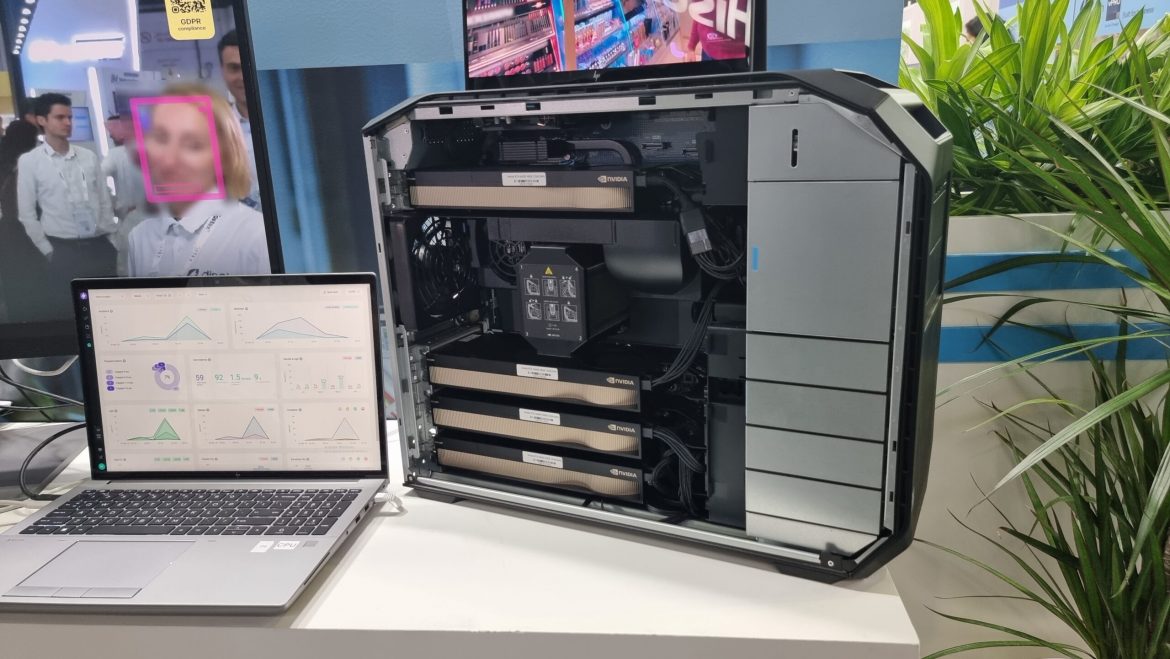Shutterstock/Adnan Ahmad Ali
- Only 18 countries on approved list
- No Middle East countries among them
- Not all bad news say observers
Despite fierce industry opposition, the White House on Monday further tightened the government’s grip on exports from the US of advanced semiconductors outside of fewer than 20 partner countries, none of them in the Middle East.
However, some industry experts say, it is not all bad news for Gulf states such as the UAE and Saudi Arabia, which are pushing to be at the forefront of the global artificial intelligence race – as long as they are willing to entrench themselves in the US camp.
The new regulations at least try to clarify a complex and cumbersome process for companies outside the US to buy American chips, says Sam Winter-Levy, a fellow for technology and international affairs at the Carnegie Endowment for International Peace in Washington.
“One way to think about the rules is that they take the Microsoft-G42 deal and turn it into a general framework that can apply to a range of countries,” he says.
With less than a week left in office, the administration of President Joe Biden divided the world into three tiers based on how free each country is to acquire the most sought-after American chips, such as those from California’s Nvidia.
In the top tier are 18 of the US’s closest allies traditionally, including the UK, Canada and Japan, which are free to buy the technology without restrictions.
In the bottom tier are China, Russia and other blacklisted countries that are considered national security threats.
The UAE, Saudi Arabia and the other GCC states are, unsurprisingly and along with most of the world, in a middle grey zone. To secure the chips, they will have to navigate American demands on the size of orders, the IT security protocols they have in place and other aspects.
The White House’s goal is to ensure none of these countries intentionally or unintentionally serve as a backdoor for Chinese access to the kind of sensitive, dual-use American technology that is seen as underpinning the future of military, scientific and economic development.
Mohammed Soliman, a global strategy adviser at McLarty Associates in Washington, says the White House wants to protect the US’s supremacy in global AI computing while making sure that China stays “in the technological rearview mirror for years to come”.
“What was once theoretical, confined to policy papers, is now a reality with profound financial, technological, security and, most importantly, geopolitical consequences,” Soliman says.

The much awaited “Regulatory Framework for the Responsible Diffusion of Advanced Artificial Intelligence Technology” imposes strict quotas on the amount of computing power that tier-2 countries and the companies headquartered in those countries can import from the US and its closest allies.
Innocuous purposes
But it also exempts small orders for “clearly innocuous purposes”, to safeguard access by medical and research organisations. It includes, too, several mechanisms whereby the quotas can be increased or eliminated altogether.
US and Western-based tech firms can apply with the Commerce Department’s bureau of industry and security for “universal verified end-user” status.
This pre-approves them to build data centres in tier-2 countries as long as they keep at least 50 percent of their total computing power in the United States and do not locate more than 7 percent in any individual country.
Companies from the “grey zone” can secure “national validated end-user” status that also serves as permanent clearance to buy American chips in certain volumes beyond their respective countries’ caps.
That the Gulf is already home to two landmark agreements moulded along these lines – between Microsoft and G42 and Google and Saudi Arabia’s Public Investment Fund – bodes well for the region’s ability to do more of the same, sources say.
The framework also lays out the possibility of foreign governments reaching bilateral agreements with the US that would raise their chip imports quotas in exchange for non-specified commitments to align their policies with American efforts on issues such as export controls and cybersecurity practices.
“In the view of the US, these are just responsible forms of technology development that any country that wants to be part of the US AI ecosystem and umbrella should stick to,” says Winter-Levy. “But there’s another way of viewing this application of US leverage, which is that it will be used to extract geopolitical concessions.”
Bottom line fears
The future of the rules is uncertain. The American tech industry has strongly opposed them, and is likely to continue to do so, with fears that the rules will severely hurt the industry’s bottom line.
The incoming Trump administration could tweak the framework or scrap it altogether, depending on who ends up with the upper hand between national security-inclined Republicans that support this tough-on-China approach and those more focused on supporting American businesses.
Soliman says: “The success of the AI diffusion rule faces two key challenges. First, it remains to be seen whether the US will fully enforce restrictions on Western chipmaking equipment to China.
“Second, how far will the broader industry resist, knowing that the rule’s impact on their global market access could be devastating?”.
